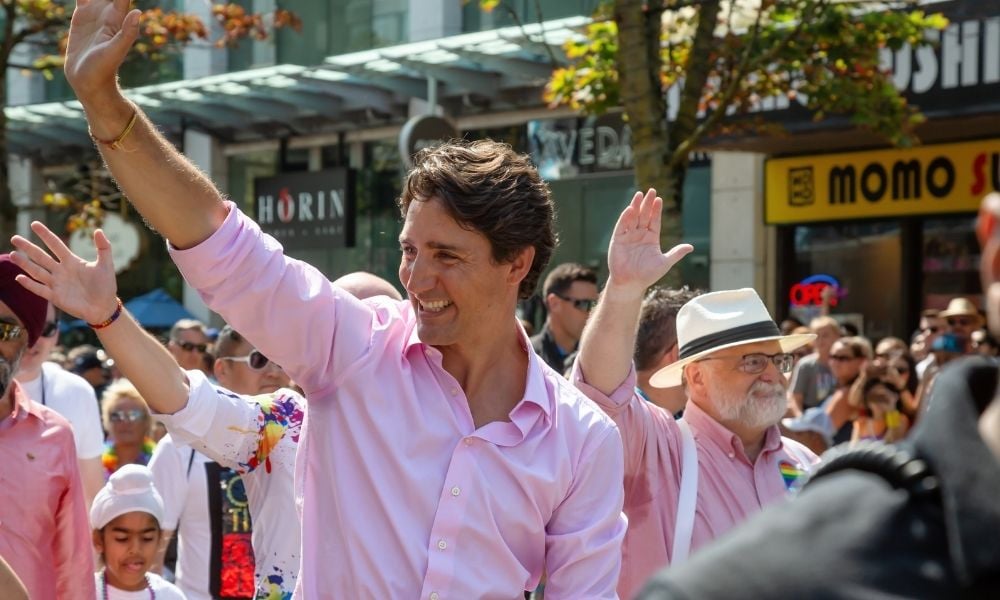Find out how the votes fell

The Liberal Party of Canada has secured the most seats in the 44th Canadian federal election, handing Justin Trudeau a third successive term as prime minister, although results indicate that party will not cross the 170-seat threshold required to secure a majority in the next parliament.
As polls close across the country, Canadians appear to have decided on a parliament that looks strikingly similar to the last, with neither Trudeau’s Liberals nor the Conservative Party, led by Erin O’Toole, making significant gains on their pre-election seat totals.
Trudeau’s Liberal Party was either already elected or ahead in 156 of the 338 seats in the House of Commons as of 1:40 a.m. Tuesday in Ottawa – that left the Conservatives ahead in 122 seats, one more than they won last time.
Read more: Election 2021: the mortgage industry has its say
The election had been billed as one of the most consequential in living memory, and the result is set to have profound implications for Canada’s housing and mortgage markets.
Since the onset of the COVID-19 pandemic, a housing market that was already frenzied in the country’s biggest cities exploded into life across Canada, with house prices skyrocketing and many regions witnessing frenetic bidding wars.
That housing crisis has featured alongside the COVID-19 pandemic as one of the central issues of the election campaign of the past six weeks, with each party unveiling policies aimed at tackling growing affordability gaps and other obstacles facing first-time homebuyers.
Among Trudeau’s most headline-grabbing pledges of the campaign was a vow to introduce a two-year ban on new foreign buyers in the Canadian housing market, with the Liberals having also proposed a new anti-flipping tax, greater buyer transparency, and an expanded tax on foreign-owned vacant properties.
A Home Buyers’ Bill of Rights published by the Liberals would lower Canada Mortgage and Housing Corporation (CMHC) mortgage insurance rates by 25% as well as introducing a tax-free savings account for first-time buyers.
Read more: Housing supply issues dominate as election looms
The Liberals said that they would tweak the First Time Home Buyer Incentive, launched by the Trudeau administration in 2019, which can reduce the size of mortgage required by many new entrants to the market (although critics say the scheme is ineffective in the country’s priciest regions and cities).
The party’s platform said that a re-elected Liberal government would allow participants to choose between the current shared-equity approach or a repayable loan at time of sale.
Trudeau has also vowed to increase the insured mortgage cut-off from $1 million to $1.25 million, a move that it said would better reflect current house prices since the threshold was last changed.
With a minority government once again looking likely, the housing policies of rival parties may carry more weight than under a majority Liberal administration.
O’Toole had placed solutions to Canada’s housing crisis at the centre of his campaign, pledging to introduce a ban on foreign buyers who did not live in or plan to move to the country.
His platform proposed the construction of a million homes in the next three years, which he said could be achieved by measures including the conversion of 15% of federally-owned real estate to housing and the introduction of incentives for the private sector to construct homes and rental housing.
Read more: "Supply, supply, supply": CIMBC CEO on top federal election priorities
The Conservative leader also said he would remove roadblocks preventing Canadians from getting mortgages, encouraging a new market in seven- to 10-year mortgages and removing stress test requirements for mortgage renewals with another lender.
His platform vowed to amend the mortgage stress test “to stop discriminating against small business owners, contractors and other non-permanent employees including casual workers.”
The NDP’s most significant proposal related to the mortgage market was to increase the maximum mortgage amortization to 30 years, up from the current 25-year limit on homes with a down payment of less than 25%.
The party also included a 20% tax on foreign buyers in its election platform, as well as the construction of 250,000 affordable homes within five years (and a further 250,000 within a decade).
It said it would increase the taxable portion of capital gains on the sale of flipped properties from 50% to 75%, double the Home Buyers’ Tax Credit to $10,000, and introduce an annual rental subsidy of $5,000 for families.
Stay tuned to Canadian Mortgage Professional for all the reaction from the mortgage industry as the makeup of the country’s next parliament becomes clear.



